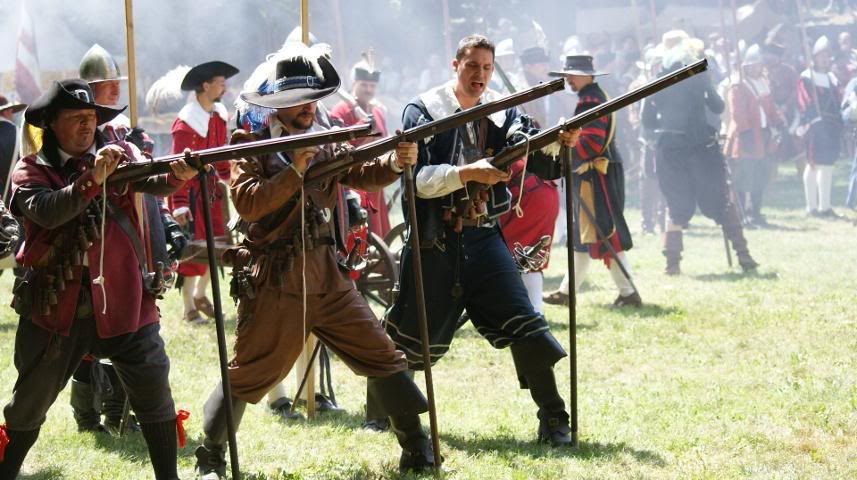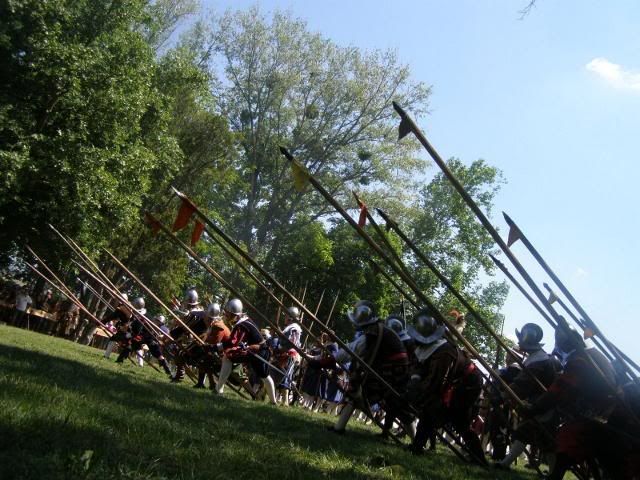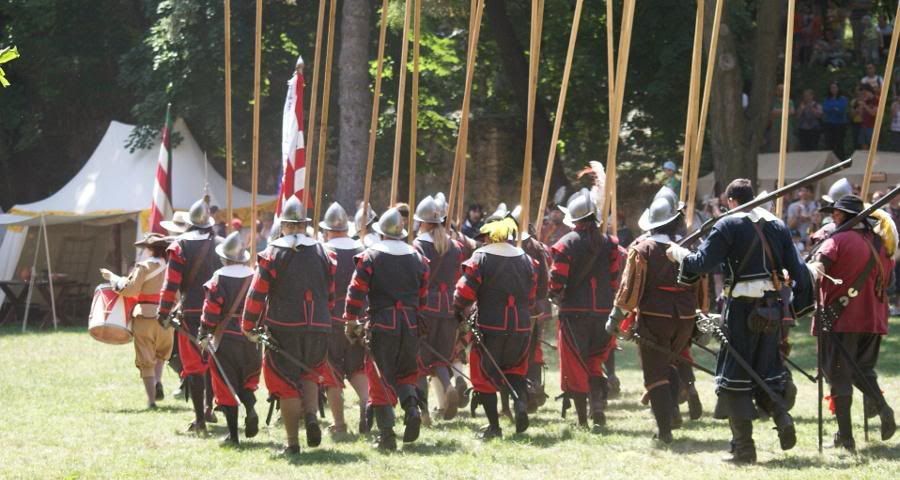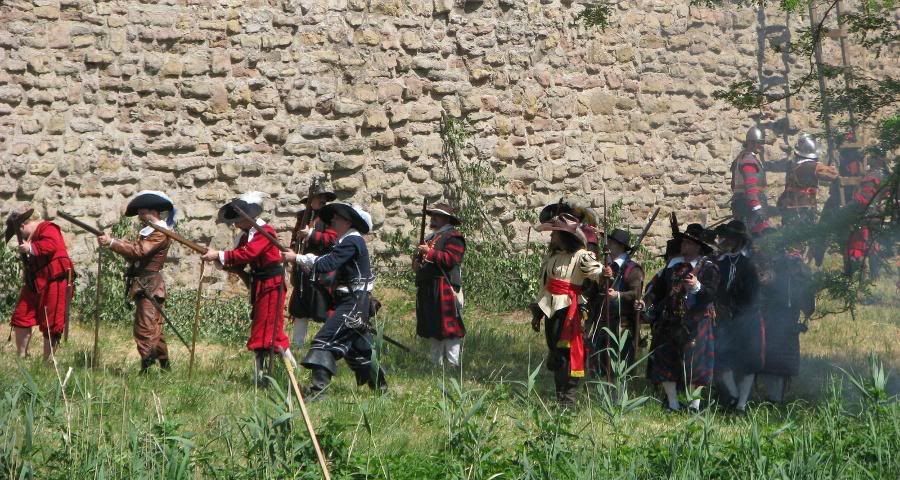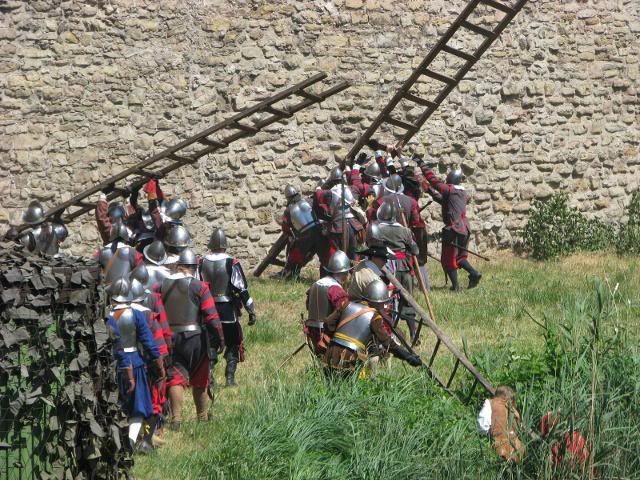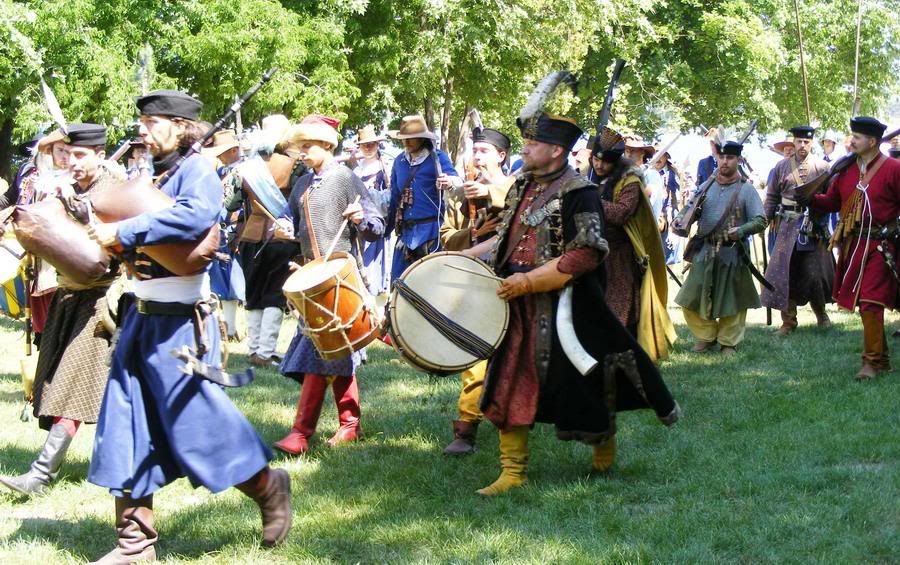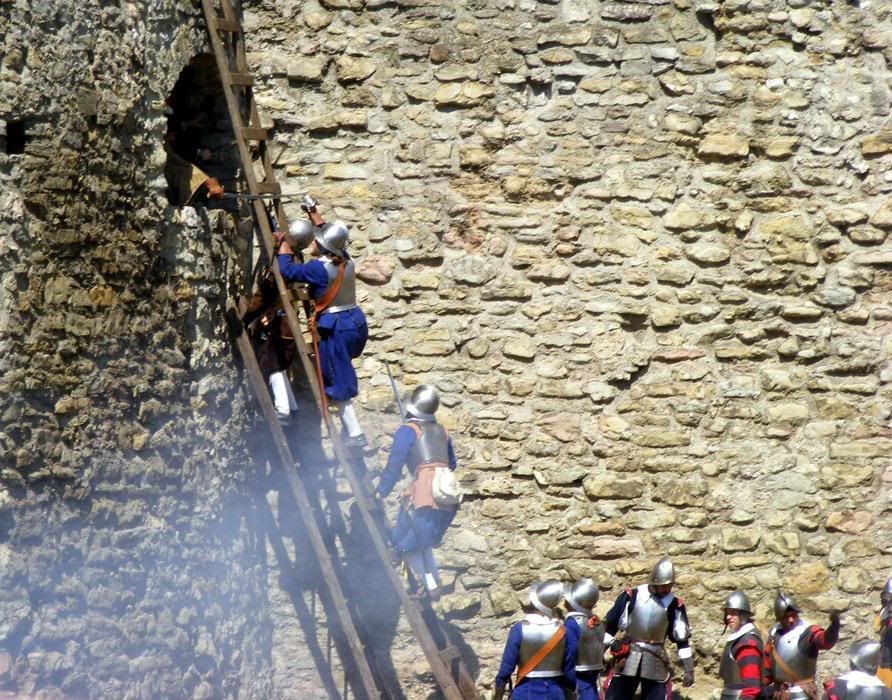1/1 Siege of Tata (Part 1/2)
Dated: June 23, 2009.
Hi:
I took photos of a reenacting siege of Tata (Hungarian castle), it's a siege from XVII c. war with Turkish. There were pikesmen, musketeers, and hajduk.
In May of 1597 - during the Long Ottoman War - it came to the siege of the castle of Tata. Although a second-line fortress, Tata became an important strategic point for the Imperial forces due to the fact that with allied control it would secure the route between Komárom and Esztergom. The most important thing about this siege is however not the strategical value, but the first documented use of a petard in Hungary ("Patara" is the archaic hungarian word for petard).
The allied forces at Tata, according the contemporary sources, counted about 2700-3000 men. The infantry consisted 1200 Hungarian and 1000 German soldiers, the cavalry about 500 alltogether.
This year there were about 150 Hungarian, Czech and Slovak reenactors, who displayed the siege in front of a large number of visitors. The four phases of the siege were shown in four different set-ups. The first of them was an artillery duell between two ships and an Ottoman battery on the castle bastion, which ended as soon as both involved ships took fire and had to disembark the musketeers.
The Turks then broke out and attacked the Imperial pikemen, without success, their light cavalry was unable to break the allied ranks.
Then the Imperial pikemen attacked the walls with ladders, meanwhile the Hungarian Hajduks, the Imperial musketeers and the artillery suppressed the defenders with heavy fire. The attackers took some casualties from rocks thrown at them and from the few Turkish muskets.
Finally, the petard came into play. As in the original battle, some Hungarian disguised themselves as Turkish travellers on the way from Buda to Gy?r with some food supplies. They told the guardsmen, that they were afraid of Hajduk raids and wanted to remain near the castle walls - the story was completely believable, as Gy?r was cut off from the rest of the Turkish domain and there was hunger, and Hajduks often attacked Ottoman transports. While the disguised soldiers were distracting the guard, a wagon with the petard was moved to the gate, which they managed to blow up. The Hajduks then stormed the gate - followed by pikemen, musketeers and the hussars and the fortress was soon in allied hands.
The participating reeanctor-groups were (in alphabetical order):
Kitores csaszari loveszek
Rondella csaszari loveszek
Rondella letraval
Hajdu
Lovas
Ostrom
Many thanks to Mr. Krisztian Takacs.
Altblau Regiment (CZ) - http://altblau.cz/
Bethlen Gábor Hagyomány?rség (H) - http://www.bethlenhagyomanyorseg.hu/
Budai Talpasok (H) - http://budaitalpasok.hu
Colleguim Armatum (CZ) - http://www.collegium-armatum.cz
Exbalestrion-Pardubice,Praha(CZ)
Lukrezie-Dolní Dobrou?(CZ)
Muketieri z Bethlen Garde (SK) - http://musketieren.sk/
Rego-Vrchlabí(CZ)
Sagremor-Ko
Salva Quardia - Olomouc (CZ) - http://www.salva.atlasweb.cz/
Végeknek Tüköri (H)
Zrínyi Haditorna Egyesület (H)
Best regards,
Krisztian Takacs
Hungary
